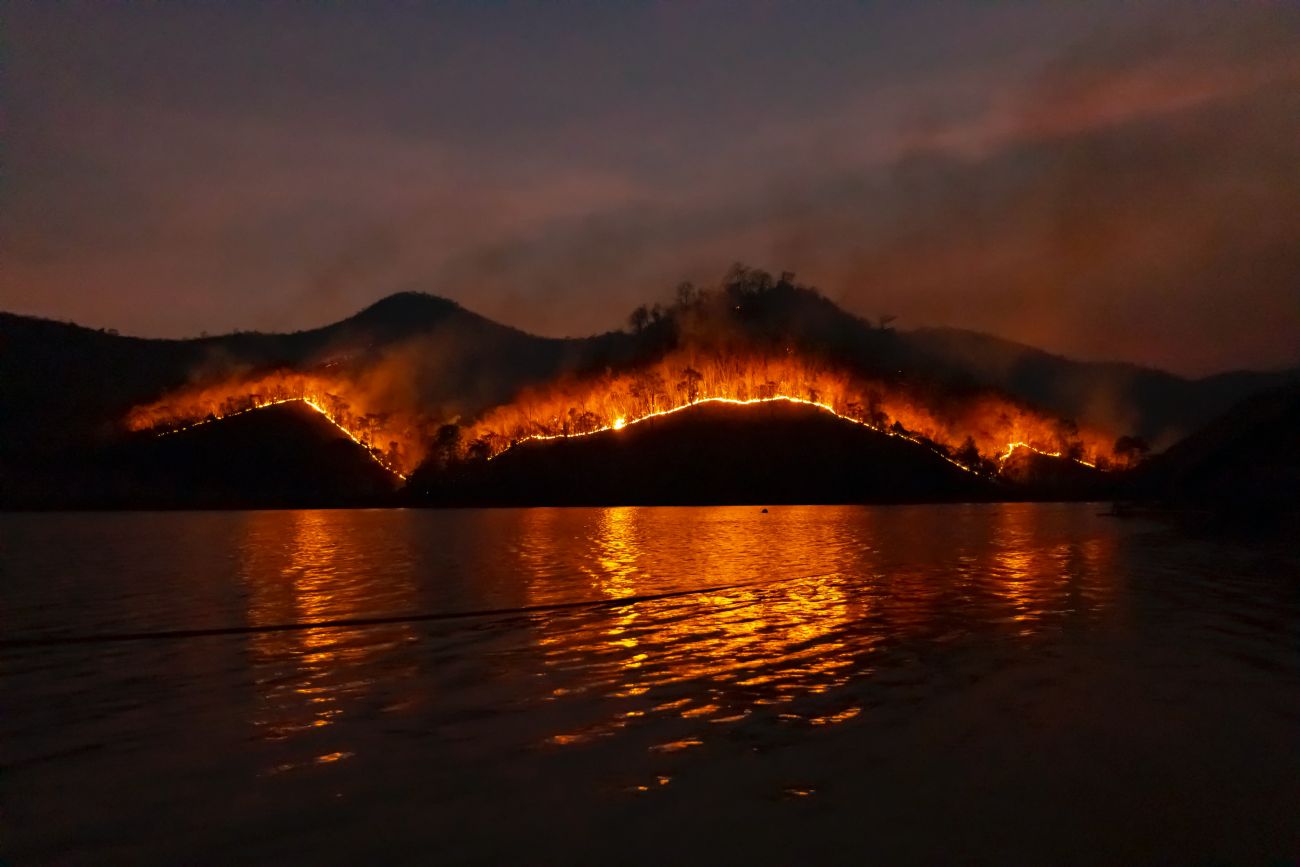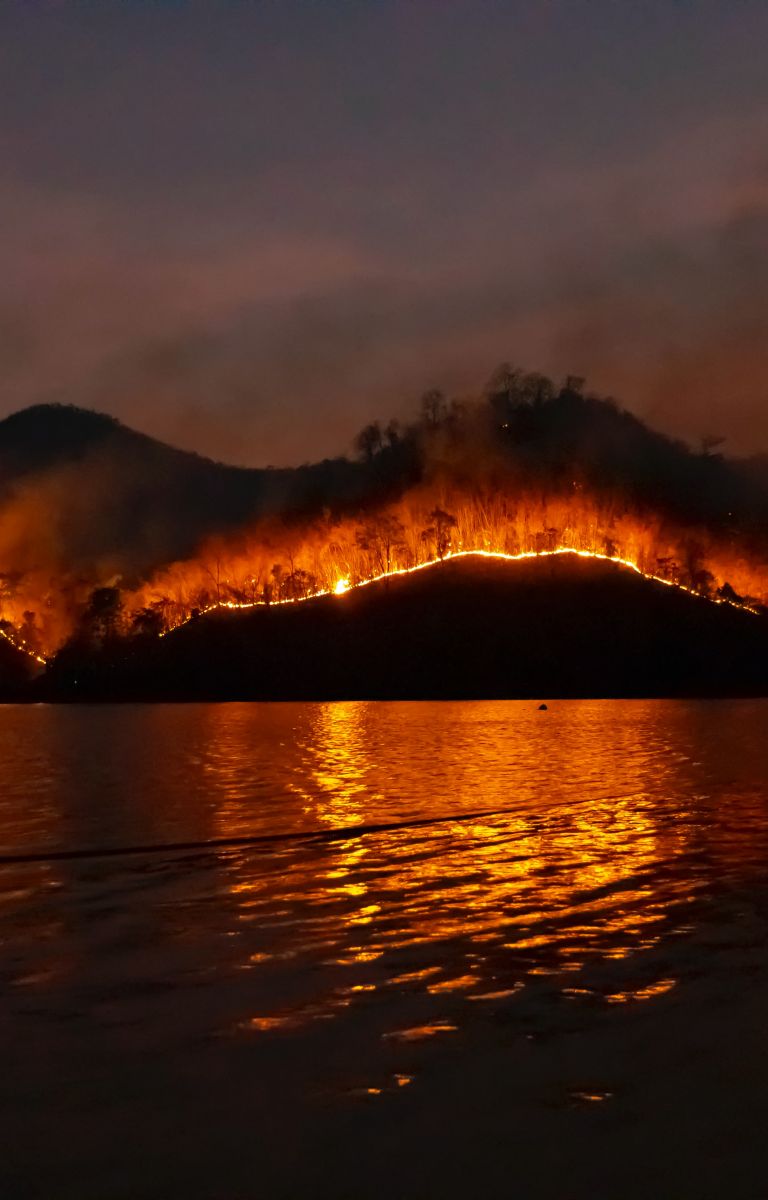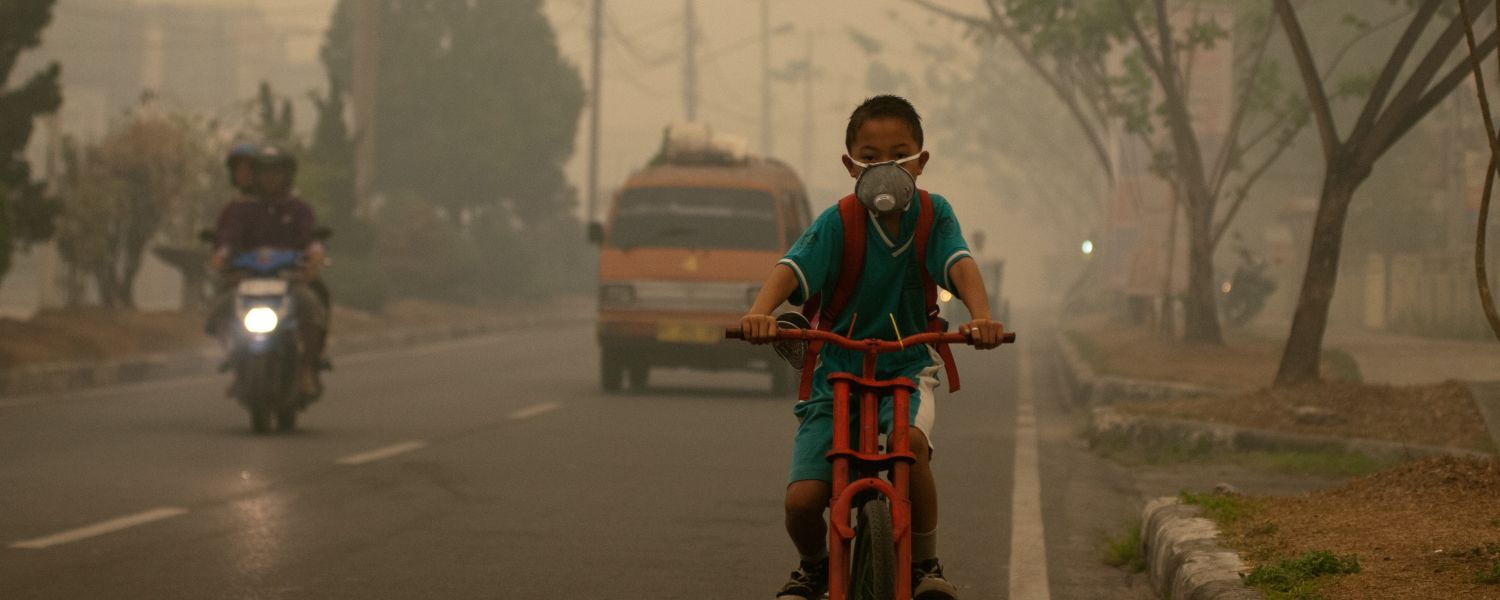

In Bangkok and in many other cities worldwide, the air is cleaner than it has been for decades (link). Pollution levels have plummeted here, just as they have in China, Europe, the United States and other parts of the world, now that so few cars are on the roads and so many factories have reduced or suspended production. It’s an interesting time to be thinking about the connections between COVID-19 and our planet’s climate and environment.
The world has mobilized to battle COVID-19 and its effects, yet decades of warnings about climate change have been largely ignored, attacked or deferred to future generations. Just as the coronavirus has dominated societies in Asia and elsewhere, so too will the climate emergency overwhelm our society’s ability to cope if we don’t take action.
But abstract threats are hard to relate to until they are right in front of us, affecting our everyday lives. This has been the case with another fast-spreading hazard that is claiming lives, poisoning the air we breathe, and is linked to both climate change and coronavirus—wildfire.
Focus on fire
Several people have died this year fighting fires in northern Thailand. Now, hundreds of fires are burning there, and in Lao PDR and Myanmar. Just as with COVID-19, the response to these fires is exposing inequalities. And we expect more fires soon in Indonesia, where the fire season is just beginning. Without control, forest fires in Southeast Asia will continue to threaten people’s health and livelihoods while destroying biodiversity and fuelling climate change.
Technology-centred approaches for dealing with wildfire are failing. But research shows we have alternatives that work. And, crucially, in a time of climate change, a deadly pandemic and rising inequality in our region, these alternatives empower and support marginalized people while strengthening local forest management.
The solution to controlling fire is community-based fire management. It can also help Asian countries to achieve the Sustainable Development Goals (SDGs) of the United Nations 2030 Agenda and their national targets under the Paris Agreement on climate change.

Indonesia’s experiences show what’s at stake. As reported last month in Asia Times, last year’s fires there gave more than 900,000 people respiratory problems, and released more than 700 million tons of greenhouse gases into the atmosphere. The fires also caused 5.2 billion US dollars in economic damage (link). Countries already straining under the impact of coronavirus shutdowns can’t afford such hits to their economies. And as climate change is likely to increase the frequency and intensity of wildfires, the need for alternative people-based approaches to managing fire grows more urgent.
Misconceptions and false solutions
Fires happen when fuels such as leaf litter and wood ignite and burn in the presence of oxygen, whose supply is determined by local weather patterns. When small fires grow into big ones, the results are generally bad for wildlife and the global climate, and for people’s security, health and livelihoods. While this is all true, it is over-simplistic. It feeds into misconceptions that thwart effective fire policy.
For instance, many policymakers believe all fires are harmful. That’s not true. They believe all fires must be prevented and extinguished. Also not true. And they think forest fires are periodic events best addressed by fighting them when they occur. Again, not true.
These myths ignore that people, forests and fire have coexisted for millennia, and that local communities have considerable knowledge about managing fires. As a result, policymakers throughout the region have tended to think that dealing with fires as they arise is the best strategy. But the emphasis on fighting fires reactively is both expensive and misguided.
The solutions are clear. Governments should recognise that they can’t control all aspects of forest fires and that they can’t and shouldn’t try to stop all fires (link). Indeed, some fires are necessary and useful. Controlled burning on a small scale can, for example, prevent a build-up of leaf litter that could otherwise fuel fires that grow into life-threatening incidents.
Proactive and people-centred
Rather than waiting for fires on which to wage war, governments should define the amount of fire they want, zoning of fire and levels of risk they are prepared to accept. Such a strategic approach must have local people and their knowledge at its heart. And it must address inequality by strengthening the rights of people who depend on forests for livelihoods and incomes, while engaging them in managing fires.
This proactive, people-centred approach can balance the strengths of government and local communities, and enable them to work as partners in forest management and protection. Local knowledge is paramount. Local people have intimate knowledge of their weather, climate, vegetation and landscape. They understand their communities’ needs and capacities, and are best placed to make judgements about risks and benefits. Crucially, they also have knowledge of how fires have shaped landscapes historically, and of traditional approaches to managing fire.
One valuable approach called integrated fire management (IFM) is akin to the now popular ‘landscape approach’ to land and natural resource management, and is aimed at larger landscapes. It has been described as focusing on “flexible, pragmatic approaches designed to support local people’s role in resource management”.
Within this framework, community-based fire management (CBFiM) can operate at a very local level, drawing on assessments of social, economic, cultural and ecological conditions to minimize damage and maximize the benefits of fire. CBFiM can be thought of as a set of principles and tools nested within IFM that can be used to better work with communities and properly engage them in fire management.
Five key principles
The principles underpinning CBFiM were established in 2001. Since then, they have been tested, refined and documented, with examples in tropical, temperate and savanna climatic environments. These principles are that:
- Fire management should focus on people and on organizing them, not on equipment or legal constructs.
- Fire management should give local people a sense of ownership to motivate them to play an active role.
- Fire management can be adapted to use local and indigenous knowledge, even within a rapidly evolving situation.
- Fire management benefits from a focus on fire-prevention over fire-suppression. Communities tend to facilitate such a focus on prevention, which reflects an instinctive tendency to avoid damage.
- Fire management benefits from an approach that balances participation among the community, private sector, and government agencies, drawing on the strengths of each group.
The results of implementing CBFiM in different regions of the world are invigorating efforts to better equip people and agencies with the knowledge and skills to manage fire. In some places, communities have substantial involvement in local decision-making processes about preventing, controlling or using fires.
Making it work
For CBFiM to work, communities need secure rights, including the right to use fire as a management tool. They also need resources and capacity. And they need to be able to make implementable decisions and engage with government agencies as genuine partners.
Community-based fire management can help countries address the underlying causes of wildfires and prevent further losses in areas that have already burned. The first step is for governments, civil society and others to recognize the rights of local communities. Recognition may include formalizing, modifying and building on indigenous systems or establishing new systems.
With formal recognition, for example, communities can play important roles in fire management by monitoring local forests and reporting or stopping fires, including through controlled burning to create firebreaks and prevent the growth of huge wildfires.
And as research has found, community-based fire management is more effective than government management in tempering uncontrolled burns, more beneficial to local ecosystems and cheaper over the long term. The potential benefits are immense because so much is connected to forests and forest fires: climate, health and prosperity. There is even a link to coronavirus.

The Covid-19 connection
Lockdowns to prevent the virus’s spread are allowing fires to rage in our region, causing great harm and damage. Social distancing is not compatible with controlled burning, training and active fire-fighting, which requires crews to work in close proximity. Meanwhile, a growing body of evidence suggests that exposure to fine particles found in wildfire smoke harms people’s immune responses, making them more susceptible to respiratory infections such as Covid-19 (paywall).
Marginalised forest people, with high exposure to wildfire smoke and limited access to health care, are once again disproportionately vulnerable. While countries are focused on fighting the pandemic, the coronavirus is showing us just how important it is to be proactive and to ensure that policy responses to threats are equitable. The same is true of fire management. People-centred approaches are urgently needed.
Over the past 30 years, the frequency and intensity of fires in Southeast Asia has increased. And whenever adverse fire weather conditions persist, it is almost a foregone conclusion that severe air pollution and haze, induced by fire-associated smoke, will ensue.
For the future
Fire, forestry and climate change professionals need to be seeking solutions to these problems beyond conventional fire management approaches. National and community-based solutions are needed, especially solutions that engage local communities, nongovernmental organizations and other stakeholders who are critical to the success of such approaches.
There is a need to apply a landscape approach, in which all fires, regardless of their purpose, are managed in an integrated way that considers the needs of nature and people. All land managers can use the landscape approach and, when considering fire, can adopt integrated fire management and a nested set of CBFiM principles to substantively and meaningfully link government, private and community actors. This approach is beginning to take hold.
Its widespread adoption will likely yield substantial benefits, including for climate change mitigation and adaptation. This will be especially important once the coronavirus has been vanquished and we can resume our struggles against global warming and persistent inequalities.
###
RECOFTC's work is made possible with the continuous support of the Swiss Agency for Development and Cooperation (SDC) and the Swedish International Development Cooperation Agency (Sida).

